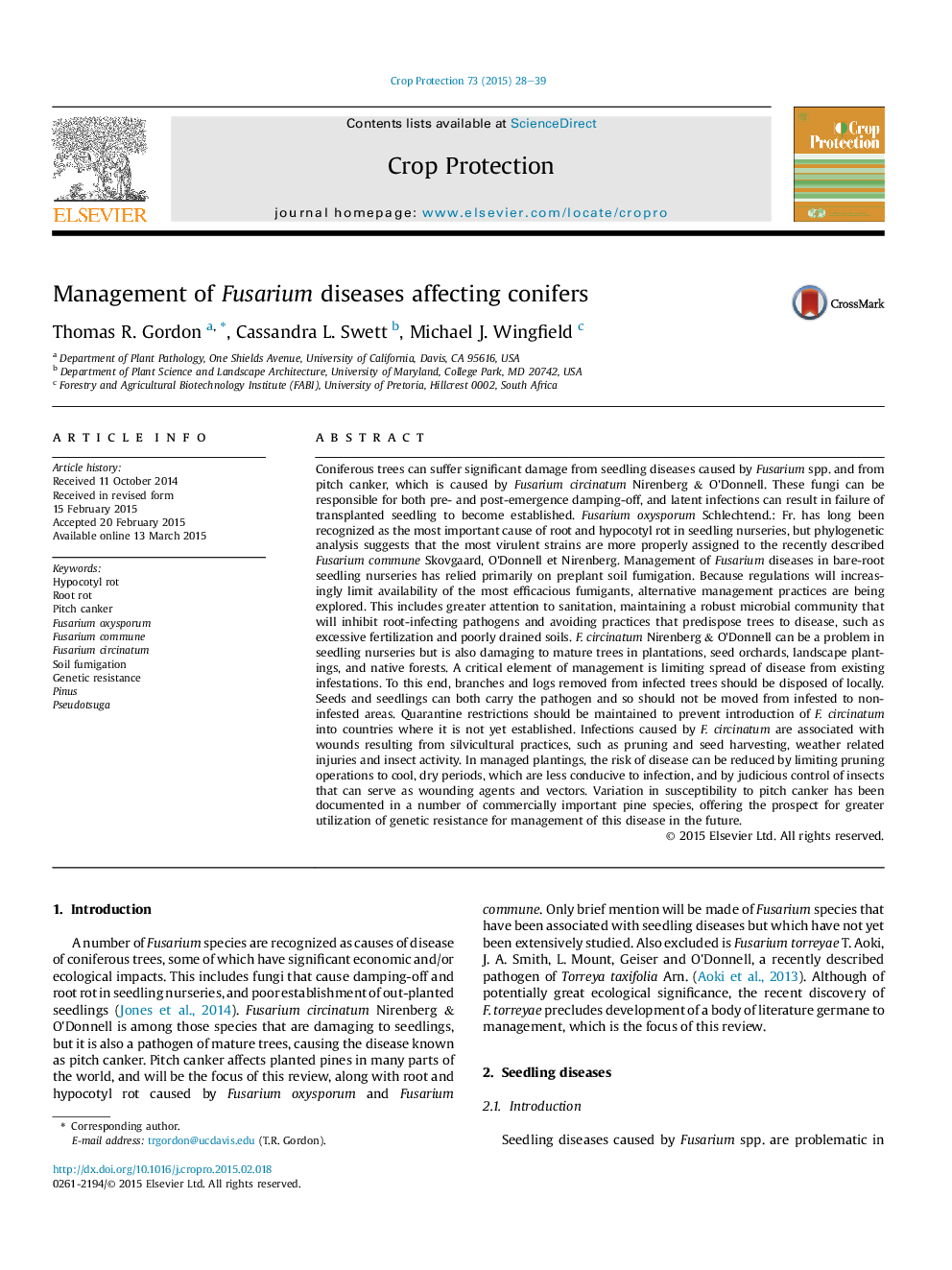| کد مقاله | کد نشریه | سال انتشار | مقاله انگلیسی | نسخه تمام متن |
|---|---|---|---|---|
| 4505768 | 1624314 | 2015 | 12 صفحه PDF | دانلود رایگان |

• Alternatives to soil fumigation are needed for control of conifer seedling diseases.
• Fusarium circinatum can be moved with seeds, seedlings and logs.
• F. circinatum infects grasses, which may serve as inoculum reservoirs.
• The impact of pitch canker is strongly influenced by predisposing stress on the host.
• Induced resistance has slowed progress of pitch canker in Pinus radiata in California.
Coniferous trees can suffer significant damage from seedling diseases caused by Fusarium spp. and from pitch canker, which is caused by Fusarium circinatum Nirenberg & O'Donnell. These fungi can be responsible for both pre- and post-emergence damping-off, and latent infections can result in failure of transplanted seedling to become established. Fusarium oxysporum Schlechtend.: Fr. has long been recognized as the most important cause of root and hypocotyl rot in seedling nurseries, but phylogenetic analysis suggests that the most virulent strains are more properly assigned to the recently described Fusarium commune Skovgaard, O'Donnell et Nirenberg. Management of Fusarium diseases in bare-root seedling nurseries has relied primarily on preplant soil fumigation. Because regulations will increasingly limit availability of the most efficacious fumigants, alternative management practices are being explored. This includes greater attention to sanitation, maintaining a robust microbial community that will inhibit root-infecting pathogens and avoiding practices that predispose trees to disease, such as excessive fertilization and poorly drained soils. F. circinatum Nirenberg & O'Donnell can be a problem in seedling nurseries but is also damaging to mature trees in plantations, seed orchards, landscape plantings, and native forests. A critical element of management is limiting spread of disease from existing infestations. To this end, branches and logs removed from infected trees should be disposed of locally. Seeds and seedlings can both carry the pathogen and so should not be moved from infested to non-infested areas. Quarantine restrictions should be maintained to prevent introduction of F. circinatum into countries where it is not yet established. Infections caused by F. circinatum are associated with wounds resulting from silvicultural practices, such as pruning and seed harvesting, weather related injuries and insect activity. In managed plantings, the risk of disease can be reduced by limiting pruning operations to cool, dry periods, which are less conducive to infection, and by judicious control of insects that can serve as wounding agents and vectors. Variation in susceptibility to pitch canker has been documented in a number of commercially important pine species, offering the prospect for greater utilization of genetic resistance for management of this disease in the future.
Journal: Crop Protection - Volume 73, July 2015, Pages 28–39